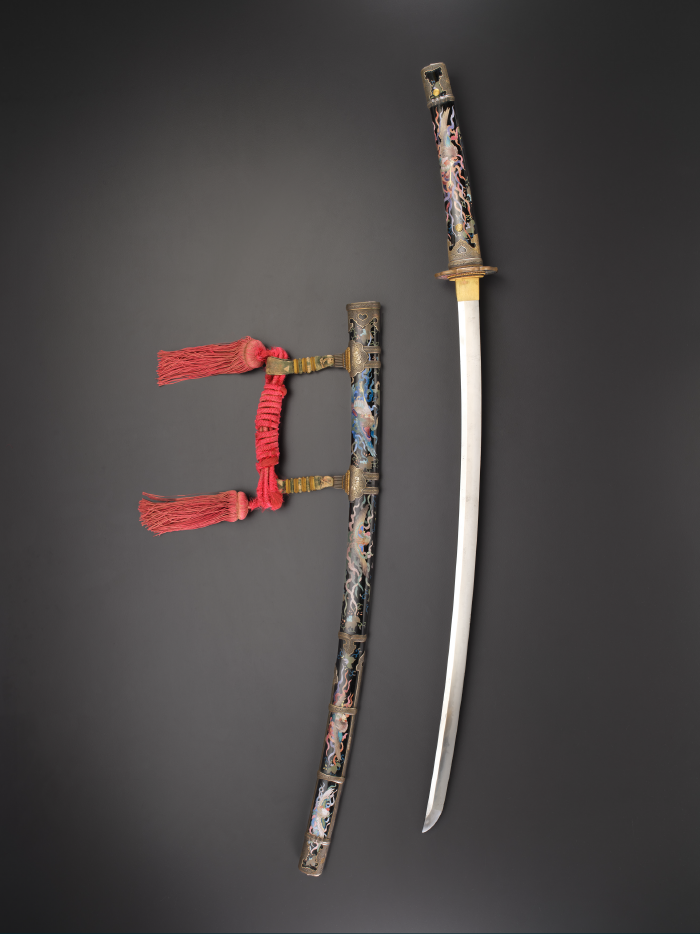Japan |
|
Arms and armour in Japan are deeply intertwined with the country's martial history and traditions. They are intrinsically linked to the bushi, Japan's warrior class (popularly known as the samurai in the West), who dominated the country's social, political, and military landscape for centuries, beginning with the Kamakura shogunate (created in 1192). These warriors followed a code of idealised behaviour known as bushido (way of the warrior), which focussed on seven virtues: honesty, courage, respect, benevolence, integrity, honour, and loyalty. While they initially rose to power due to their military prowess, they maintained their elevated positions through political, financial, and cultural acumen, and were expected to hold administrative positions within their military government. In addition, and in contrast to the brutality of their profession, they also became highly cultivated individuals, practicing, supporting, and patronising the arts.
|
Taichi and saya (scabbard)
|
|


